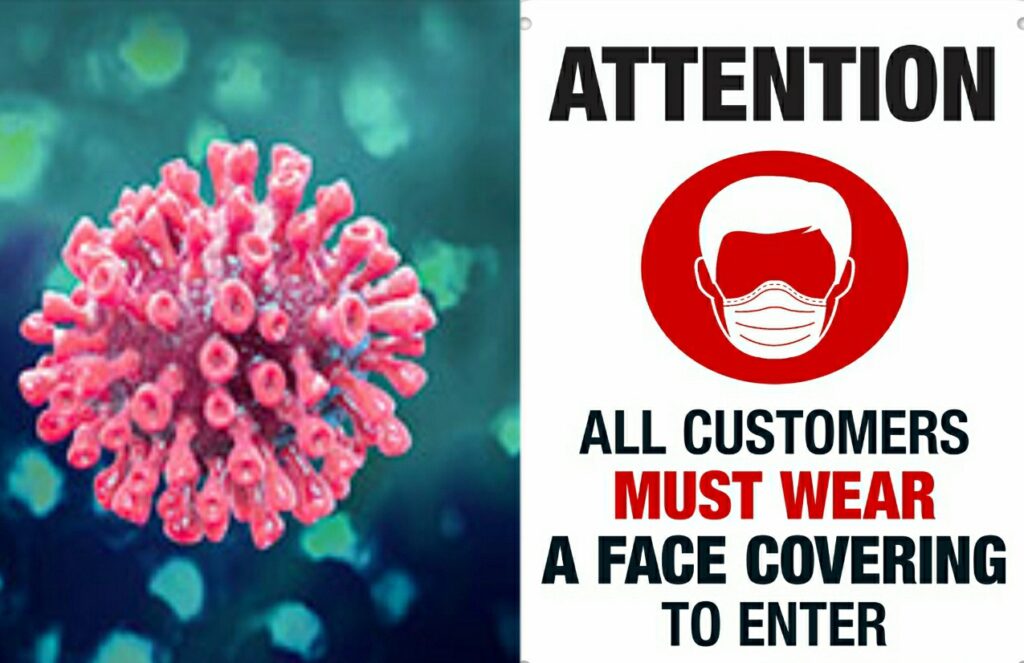
An intervention is only as effective as the extent to which people are willing to adopt recommended measures. One obstacle to the success of COVID-19 interventions, especially in the USA, has been the politicisation of control measures, including the adoption of masks and physical distancing. Interplay between acceptance of non-pharmaceutical interventions and vaccination shapes local transmission dynamics. Despite the importance of human behaviour to the epidemiological trajectory, the integration of these interdependent factors into COVID-19 vaccination models has rarely been done. In The Lancet Infectious Diseases, Peter Jentsch and colleagues account for these considerations in their assessment of COVID-19 mortality under different vaccination programmes. Multifaceted approaches are necessary to control the spread of SARS-CoV-2, particularly in the months before widespread vaccination coverage is achieved. However, the staunch opposition to non-pharmaceutical interventions among a substantial proportion of some populations has hampered control of the outbreak. Only 65% of Americans report consistently wearing a mask in public. The willingness to wear a mask in public was also found to be heterogeneous among different regions in the USA and across time. For example, willingness to wear a mask regularly varied from 57% in the midwest region to 87% in the northeast region. This heterogeneity in behaviour is especially precarious given that vaccine uptake is similarly clustered. As of March 4, 2021, the median proportion of the population who had received at least one dose of COVID-19 vaccine across the nine states in the northeast region was 6% greater than the median for the 12 states in the midwest. Conversely, regions with lower adherence to non-pharmaceutical interventions will require higher levels of herd immunity to interrupt transmission and could prolong the epidemic throughout the country and beyond by continuously seeding cases.
Risk perceptions are fundamental drivers of behavioural shifts. Consequently, the adoption of non-pharmaceutical interventions is likely to wane as vaccination becomes more widespread and prevalence falls. Even before the effects of vaccination campaigns are fully realised, their initiation could boost optimism which might, in turn, lead to the relaxation of non-pharmaceutical interventions. Jentsch and colleagues developed an innovative multilevel epidemiological model accounting for the temporal response of public health authorities in concert with alternative vaccination strategies, integrating population acceptance of non-pharmaceutical interventions using game theory. By considering the effect of vaccination on the implementation and practice of non-pharmaceutical interventions, the projected burden of COVID-19 during a vaccination campaign is more realistic than if these components were neglected. The data-driven analysis used in this study was informed by age-stratified case counts, mobility, and seroprevalence data for Ontario, Canada, over the course of the COVID-19 epidemic. Their simulations show that prioritising young individuals (aged <20 years) for COVID-19 vaccination is never the optimal strategy to minimise deaths. This result is attributed to the assortative mixing patterns, along with the disproportionate fatality rates between young people and older adults. Differences in the age-specific likelihood of vaccine refusal further underscore the greater public health impact of targeting older people (aged ≥60 years). Specifically, only 53·5% of individuals aged 18–49 years report a willingness to vaccinate compared with 75% for individuals aged 65 years and older. Prioritising older people in long-term care homes could be essential in reducing mortality, given their increased vulnerability, the rapid rate of spread within the homes, and that a concerning proportion of care workers are unwilling to be vaccinated. In an extension of their baseline model, Jentsch and colleagues also considered vaccine refusal over the course of the campaign. To promote concomitant vaccination uptake and non-pharmaceutical intervention adherence, there are myriad approaches that have proven effective. Although data from the Guttman Center for Public Opinion Research and Policy at the Israel Democracy Institute have shown substantial initial vaccine hesitancy in Israel, the country has achieved the highest vaccination coverage worldwide so far by employing multiple strategies to alleviate concerns, maximise access, and streamline distribution. Rapid vaccination was facilitated by extensive education campaigns regarding vaccine safety and efficacy, establishment of vaccination sites throughout the country, including remote areas, and efficient centralisation of funding and coordination through their national health-care system. 6 weeks into the vaccination campaign, 34·9% of Israel’s population had received at least one dose of the vaccine, in contrast to 9·4% in the UK, 7·2% in the USA, 2·8% in France, and 2·4% in Italy. The reductions in transmission that are achieved by adherence to non-pharmaceutical intervention and vaccination recommendations also decelerates the evolution of the virus. The emergence of more transmissible variants exacerbates the COVID-19 pandemic, particularly if vaccines are less efficacious against the novel variants. Any erosions in vaccine efficacy make non-pharmaceutical interventions all the more imperative. Reciprocally, fatigue over non-pharmaceutical interventions and the ensuing degradation in adherence requires urgent acceleration in vaccination coverage.